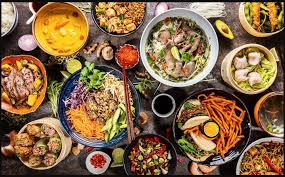Food is one of the most compelling reasons to travel. Culinary tourism, or food-focused travel, invites adventurers to explore the world through its flavors, textures, and aromas. By experiencing local cuisines, travelers gain insight into the history, culture, and identity of a place, making each bite an exploration of tradition and innovation.
Street Food Adventures
Some of the most authentic culinary experiences happen on the streets. From the bustling hawker stalls of Singapore to the vibrant taco stands of Mexico City, street food is an integral part of many cultures. Sampling these delicacies provides a direct connection to local life and reveals the creativity of everyday chefs.
Cooking Classes and Farm Visits
For travelers seeking a hands-on experience, cooking classes and farm visits offer a deeper dive into local gastronomy. Learning to make pasta from scratch in Tuscany or crafting sushi in Tokyo bridges the gap between visitor and host, fostering a greater appreciation for culinary traditions.
Michelin-Starred Journeys
On the opposite end of the spectrum, luxury culinary tourism involves dining at world-renowned Michelin-starred restaurants. Foodies traverse the globe to experience the innovation of chefs who blend artistry with gastronomy. Cities like Paris, Copenhagen, and New York are meccas for high-end culinary indulgence.
A Taste of Sustainability
Sustainable dining is becoming a key component of culinary tourism. Farm-to-table restaurants, organic vineyards, and eco-friendly eateries are attracting travelers who want to indulge while minimizing their environmental footprint. Exploring the flavors of the world while supporting sustainable practices is a growing trend among conscientious travelers.
Why Culinary Travel Matters
Culinary journeys create lasting memories, bridging cultural divides through the universal language of food. Each dish tells a story, and by savoring local delicacies, travelers forge deeper connections with the places they visit.

Leave a Reply